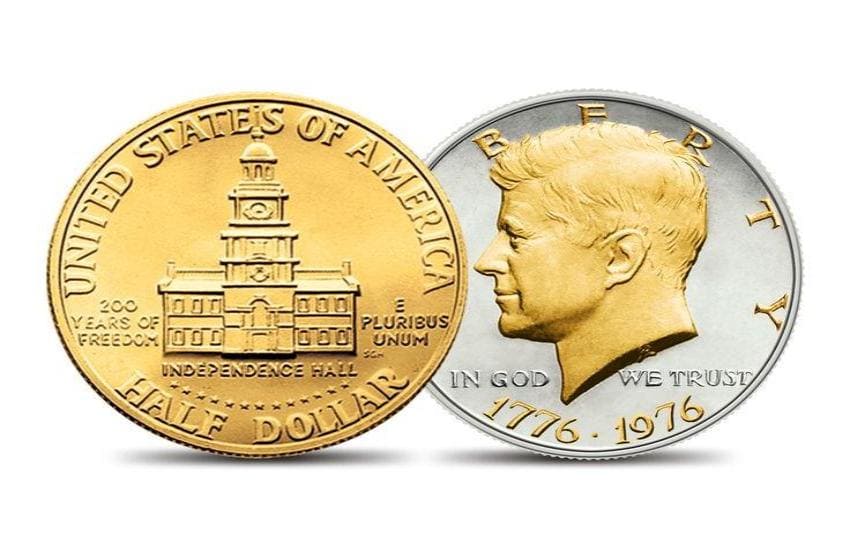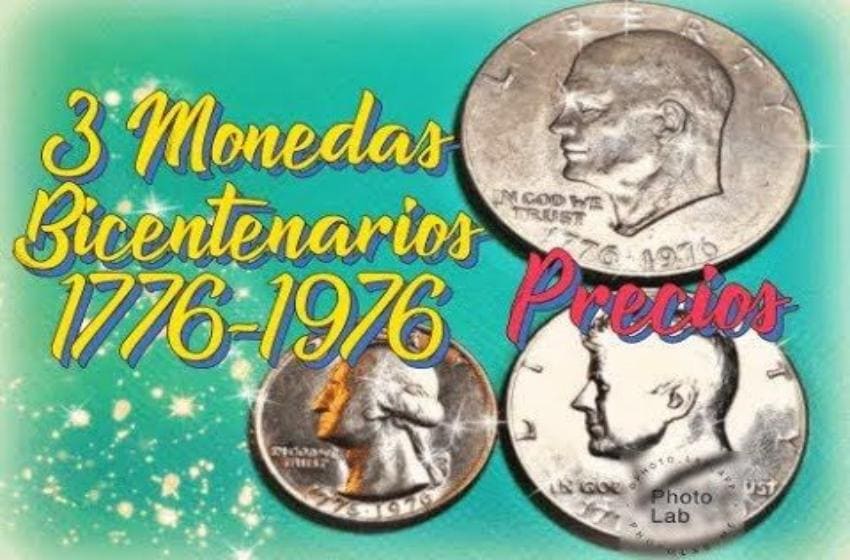
The 1776 to 1976 half dollar is a restricted currency with striking cultural and historical value in the U.S. Due to its controlled mintage and legendary layout, it has become famous for history fanatics and coin numismatists. However, it is necessary to understand this coin’s worthiness before investing in it. Continue reading to understand the worth, prominence, and determining aspects of 1776 to 1976 half dollar value over time.
The Bicentennial Half Dollar History
The American Bicentennial involved festivities in the 1970s to accredit two hundred years of historical events that resulted in the creation of the sovereign nation of the U.S. During these celebrations, the Congress permitted the redesigning of three Bicentennial coinages, entailing the Kennedy half dollar, the Washington Quarter, and the Eisenhower Dollar. The 1976 half dollar encompasses the eminent Independence Hall on the back and President John F. Kennedy’s portrayal on the front.
The Independence Hall in this denomination’s layout greatly supplements its cultural and historical importance, demonstrating the origin of the Constitution and the Declaration of Independence. These coins were circulated for only one year, making them a unique and restricted version of the regular half dollar. Many were mint, but proof and uncirculated editions are also available for numismatists.
What Is the Bicentennial Half Dollar Value?
The 1976 half dollar value depends more on forces like its coin status, rarity, and market demand. Typically, a Bicentennial Half Dollar value is slightly greater than its face worth of 50 cents. But the proof and uncirculated editions can reach much higher worthiness in mint state. For example, in 2021, a Kennedy Half Dollar classified as mint condition (MS70) was retailed for a remarkable $9,600. Below are the 1976 half dollar estimated values for numerous categories:

image source: Pinterest
- Circulated (no mint mark): $2
- Circulated (D mint mark): $2
- Proof (S mint mark, clad): $8
- Silver (S mint mark, regular): $7
- Silver (S mint mark, proof): $18
Factors That Impact the Value
Certain factors can impact the value of this culturally important coin. Some critical aspects of the half dollar 1776 to 1976 value that investors and collectors should consider include:
1) Coin’s Condition
The denomination’s grade or condition is among the vital elements influencing the 1776 to 1976 half dollar value. Mint-restrictive coins are more prized than those with tear and wear. The Professional Coin Grading Company (PCGC) utilizes a 70-point scale to rate these currencies, whereas MS70 is the uppermost valuation.
Coins with MS60-MS70 valuations are considered uncirculated or mint condition and have a substantial value compared to those with lower gradings. Those with an attractive appearance and little to no marks are classified as MS70, while those with a few scratches or blemishes are categorized as MS60.
2) Rarity
The coin’s rarity is critical to its worthiness. A scarcer denomination can be more valuable to hoarders anticipating completing their collections. The Kennedys’ half dollar was released in extensive quantities, and thus, coins from this year are not predominantly scarce. However, specific assortments of the 1976 half dollar, like those with an S or D mint spot, can fetch high values since they may be challenging to find.
3) Collectability
The Kennedy Half Dollar collectability is another aspect that can influence its worth. Most history fanatics and coin numismatists are drawn to this coin for its cultural symbolism and exceptional sovereignty representation. Thus, its demand continues to rise with time, elevating its worthiness and collectability.
4) Unique Designs
Due to its excellent formation and designs, the Kennedy Half Dollar is more popular than other mints of the time. The Independence Hall on the back side and dual dates signifying 200 years of liberation charm many collectors to look for this coin. These exceptional aspects add to the desirability of this coin.
5) Errors and Variations
Beyond the standard Independence Hall design of the 1776 to 1976 half dollar, other distinctions can catch the eye of numismatists. For instance, the double-denomination coins and the missing mint mark (No-S proof coin) can make them scarce and high-priced. These variations can attain a high value in the marketplace since they are highly collectible.

image source: Pinterest
Other errors may include:
- Kennedy Half Dollars with a clipped planchet error
- Coins with mirror images or inverted images (blockage error)
- Coins with off-center designs
- Bicentennial Half Dollars from specific mints, such as the San Francisco silver ones
6) Market Demand and Trends
As coin-collecting interest fluctuates, so does the 1976 half dollar value. In the contemporary world, the demand for Bicentennial coins is rising since many collectors anticipate adding these inimitable coins to their collection to complete it. It has amplified the Bicentennial Half Dollar value and price, making it a potentially lucrative venture.
Comparison With Other Bicentennial Coins
While all three minted Bicentennial denominations hold historical significance and are highly collectible, the 1976 Kennedy Half Dollar may be the most valuable and prevalent due to its cultural significance, rarity, and prominent design. For example, the uncirculated Eisenhower Dollar worthiness is around $7-$9, while the uncirculated Washington Quarter value can be nearly $10. But the uncirculated Bicentennial Half Dollar worth can scope from $ 7,000 to $12,500, making it more noteworthy and prevalent.
Tips for Preserving the Value of Your 1976 Half Dollar
For the investors and collectors desiring to tap into the half dollar 1776 to 1976 value, taking care of your denominations is crucial to preserve their worthiness. Below are some tricks to maintain the value of your coin:
- Utilize gloves to avoid attaching lubricants onto the denomination’s surface when handing it.
- Keep your coins in a shielded album or holder to prevent moisture and air exposure damage.
- Involve experts when cleaning your 1976 half dollar to avoid their value lessening and causing scratches to their exteriors.
Is Investing in Kennedy Half Dollar Lucrative?
Despite shifts in its coinage value, the Bicentennial Half Dollar has established itself as a highly treasured and collectible denomination. It has been sold consistently for high prices due to its unique aspects, cultural symbolism, rarity, and independence significance. As with any venture, it is crucial to investigate and determine if exploiting this coin is practical for you.
Where Can I Purchase or Trade a Bicentennial Half Dollar
Selecting trustworthy dealers and sources is essential when purchasing or selling 1976 half dollars. Certified numismatic establishments, reliable online auction platforms, and coin dealers can offer a safe transaction environment. Staying informed about trends and researching market prices can aid in making informed selling or buying choices.
Takeaway
The Kennedy Half Dollar signifies the U.S.’s sovereignty journey, making it adored by history devotees and numismatists. Identifying the aspects influencing its value, such as historical symbolism, scarcity, and condition, empowers collectors and stakeholders to make informed options. Whether you’re a newcomer or a seasoned numismatic to the realm of collectors, the Bicentennial Half Dollar offers a valuable addition and a tangible connection to U.S. history.

